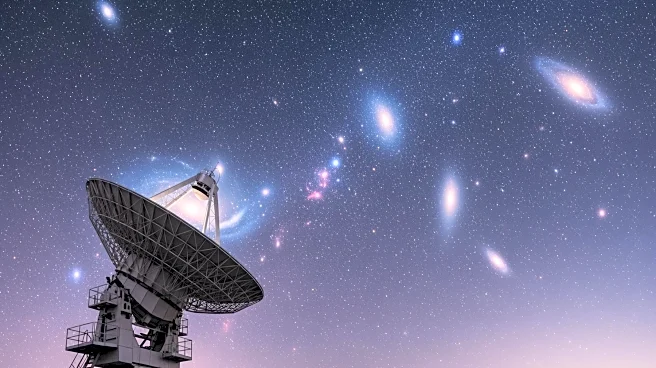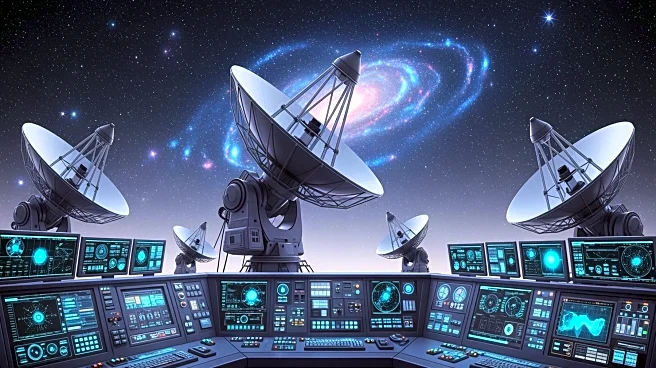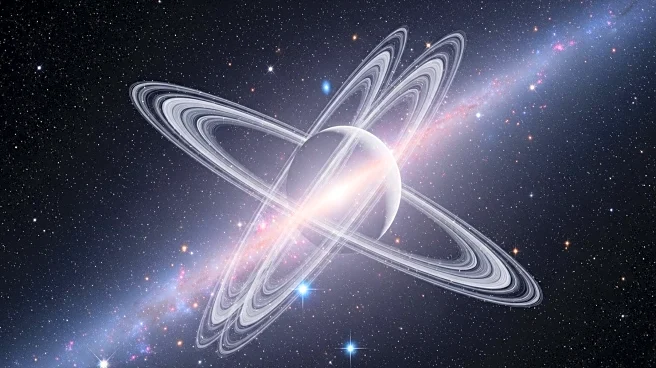What's Happening?
Astronomers have made significant progress in detecting a faint radio signal from the early universe, known as the 21-centimeter hydrogen line. This signal, originating from hydrogen gas approximately
800 million years after the Big Bang, offers insights into the universe's conditions during a largely unexplored period. Researchers from the International Centre for Radio Astronomy Research in Perth, Australia, have developed a new statistical filtering technique to isolate this signal from stronger radio noise sources, such as the Milky Way and Earth's atmosphere. The study, published in The Astrophysical Journal, suggests that the universe was warmer than previously expected during this era, challenging existing models that predicted a colder start to reionization.
Why It's Important?
The ability to detect the 21-centimeter hydrogen line is crucial for understanding the early universe's evolution, particularly the Epoch of Reionization when the first stars and galaxies began to form. This research provides new constraints on the temperature and environment of intergalactic hydrogen gas, offering clues about the influence of early black holes and massive stars. The findings could reshape cosmological models and enhance our understanding of how the universe transitioned from the cosmic dark ages to a state where starlight could travel freely. This advancement also sets the stage for future observations with the Square Kilometre Array, a next-generation radio telescope that promises to further unravel the mysteries of the early cosmos.
What's Next?
The new data-cleaning technique developed by the researchers lays the groundwork for the Square Kilometre Array (SKA), which is currently under construction in Australia and South Africa. The SKA is expected to have the sensitivity required to directly detect the elusive 21-centimeter signal, providing more detailed insights into the early universe's conditions. As the SKA becomes operational, astronomers anticipate gaining a clearer understanding of the processes that shaped the universe's evolution, potentially leading to breakthroughs in cosmology and astrophysics.
Beyond the Headlines
The study's implications extend beyond immediate scientific discoveries, as it challenges existing cosmological models and prompts a reevaluation of the universe's early thermal history. The research highlights the role of X-rays from early black holes and remnants of massive stars in heating intergalactic gas, offering a new perspective on the universe's formative years. This could influence future theoretical work and inspire new observational strategies to explore the universe's infancy.












